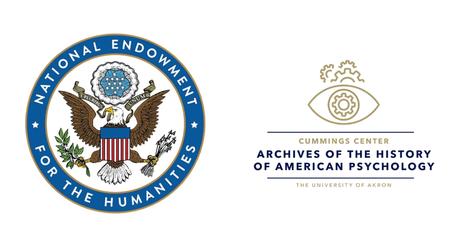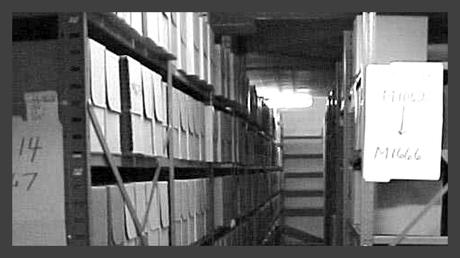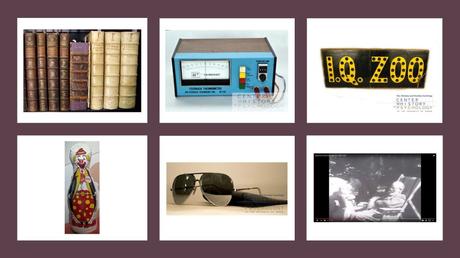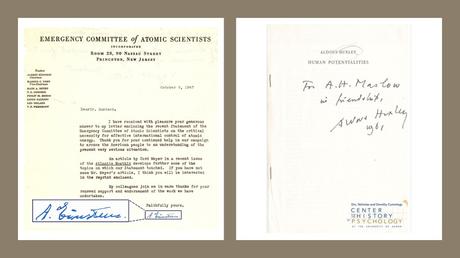—Contributed by Rhonda Rinehart
“The [Psychology] Archives are a valuable resource to the University of Akron campus community, the State of Ohio, the psychology profession and field, the nation, and …to the world, through its unique and broad collections.”
— Thomas F.R. Clareson, Vice President, The Foundation for the Advancement of Conservation

So much has changed in the 12 years since the Archives of the History of American Psychology moved from the basement of an old department store to our own 70,000 square foot building. We’ve expanded our space for storage, research, teaching, and exhibitions. We’ve enhanced our services, our collections continue to grow in size and content, and we’ve become a renowned research and humanities center for the history of psychology. For more than a decade, we’ve been focused on expanding our public face.
As we move into our next decade in our new home, our primary focus is to return to our roots and focus our resources on preserving and growing the Archives of the History of American Psychology. This means understanding current risks to our historical collections, understanding what we can do to protect them, and then creating a world-class storage facility that meets those needs.
 AHAP basement stacks, Polsky building, circa 2001
AHAP basement stacks, Polsky building, circa 2001  Cummings Center basement in former Roadway building, 2022
Cummings Center basement in former Roadway building, 2022But how to begin? All major initiatives must begin with an clear understanding of the current situation: how does our current facility impact the longevity of our collections? Funding from the National Endowment for the Humanities is helping us with that. The $10,000 Preservation Assistance Grant, awarded to the Center in 2022, will support a 3-day onsite assessment of the Center’s storage environment, mechanical systems and structural environment. This assessment, conducted by an expert in preservation environments, will enable us to understand the strengths and weaknesses of our current storage facility and the long term impact of the space on the nearly 4,000 linear feet of materials in our care. Our goal for this phase is to understand where we’re starting from and how well we are doing our main job: providing an optimal storage environment for the best long-term care of paper, wood, metal, audiovisual materials, artwork, mechanical objects, and a host of other one-of-a-kind media and materials within the Center’s historical collections.
 Clockwise from top left: antiquarian books from CCHP library; biofeedback thermometer donated by F. Joseph McGuigan; I.Q. Zoo sign from the Animal Behavior Enterprises collection; Bobo doll donated by Albert Bandura; sunglasses prop from the Stanford Prison Experiment donated by Philip Zimbardo; Sigmund Freud home movie still from the Films from the History of Psychology collection.
Clockwise from top left: antiquarian books from CCHP library; biofeedback thermometer donated by F. Joseph McGuigan; I.Q. Zoo sign from the Animal Behavior Enterprises collection; Bobo doll donated by Albert Bandura; sunglasses prop from the Stanford Prison Experiment donated by Philip Zimbardo; Sigmund Freud home movie still from the Films from the History of Psychology collection.Our greater goal is to gather the knowledge necessary for planning and creating an optimal but realistic storage environment suited to a world class collection. For this beginning phase, Linden Preservation Services will provide expertise on the building’s existing environment and provide a three-level report that will include recommendations for daily improvements, strategic plans for building renovations, and suggestions for long-term structural and environmental solutions.
 From left: letter from Albert Einstein to Henry Goddard from the Henry Herbert Goddard papers; signed copy of Human Potentialities by Aldous Huxley from the Abraham Maslow papers
From left: letter from Albert Einstein to Henry Goddard from the Henry Herbert Goddard papers; signed copy of Human Potentialities by Aldous Huxley from the Abraham Maslow papers Stewardship of our materials is at the center of our mission. Our collections are used all over the world by researchers, by artists, in exhibitions, for teaching and outreach, and so much more. It is our duty to provide the best care we are able for these unique items. We are excited to take this first step forward.
Join us on this journey as we post updates and images of our environmental and storage improvements.
